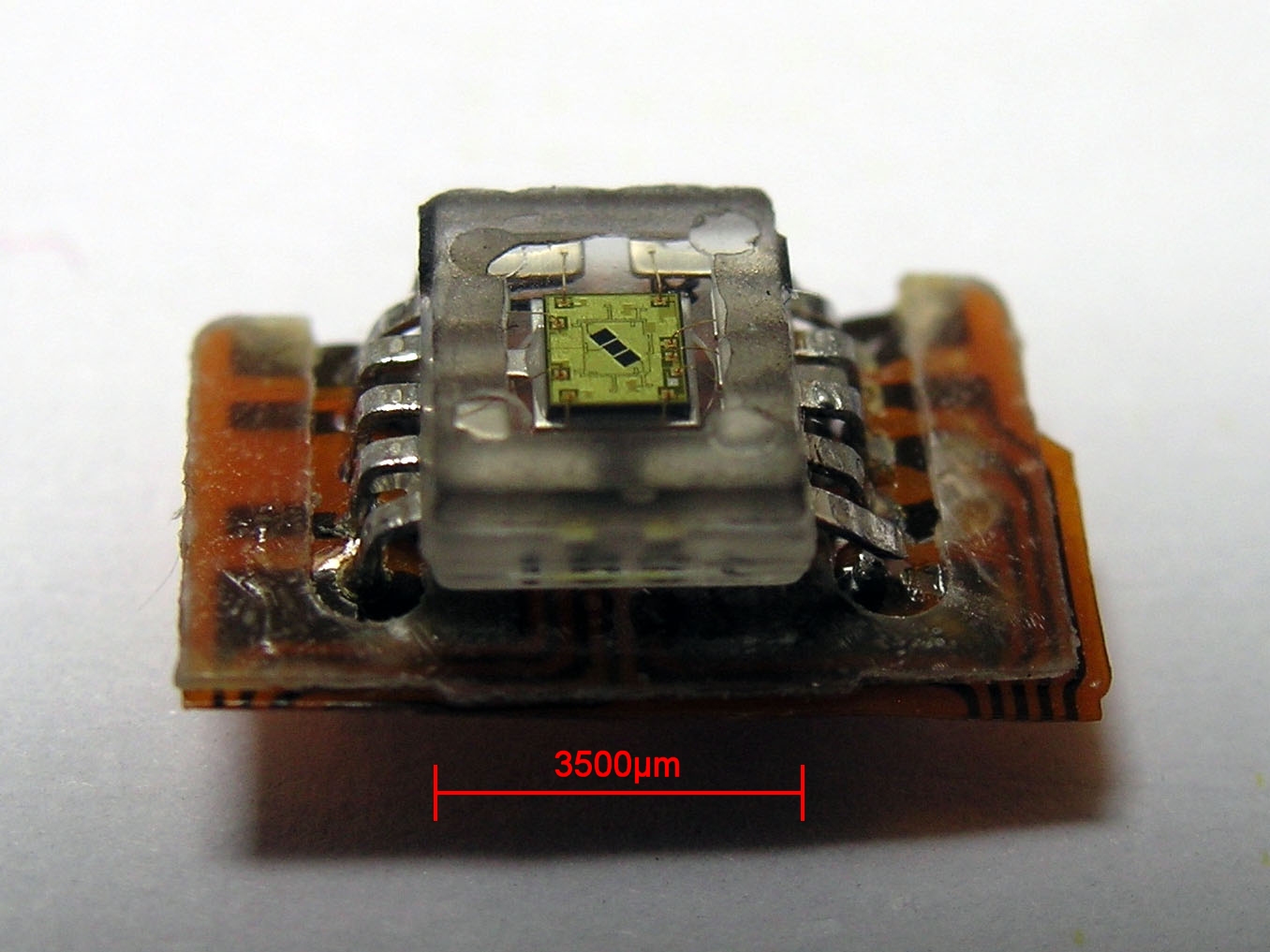|
Selenium
Selenium is a chemical element; it has symbol (chemistry), symbol Se and atomic number 34. It has various physical appearances, including a brick-red powder, a vitreous black solid, and a grey metallic-looking form. It seldom occurs in this elemental state or as pure ore compounds in Earth's crust. Selenium ( ) was discovered in 1817 by , who noted the similarity of the new element to the previously discovered tellurium (named for the Earth). Selenium is found in :Sulfide minerals, metal sulfide ores, where it substitutes for sulfur. Commercially, selenium is produced as a byproduct in the refining of these ores. Minerals that are pure selenide or selenate compounds are rare. The chief commercial uses for selenium today are glassmaking and pigments. Selenium is a semiconductor and is used in photocells. Applications in electronics, once important, have been mostly replaced with silicon semiconductor devices. Selenium is still used in a few types of Direct current, DC power surge ... [...More Info...] [...Related Items...] OR: [Wikipedia] [Google] [Baidu] |
Selenium Trigonal
Selenium is a chemical element; it has symbol Se and atomic number 34. It has various physical appearances, including a brick-red powder, a vitreous black solid, and a grey metallic-looking form. It seldom occurs in this elemental state or as pure ore compounds in Earth's crust. Selenium ( ) was discovered in 1817 by , who noted the similarity of the new element to the previously discovered tellurium (named for the Earth). Selenium is found in metal sulfide ores, where it substitutes for sulfur. Commercially, selenium is produced as a byproduct in the refining of these ores. Minerals that are pure selenide or selenate compounds are rare. The chief commercial uses for selenium today are glassmaking and pigments. Selenium is a semiconductor and is used in photocells. Applications in electronics, once important, have been mostly replaced with silicon semiconductor devices. Selenium is still used in a few types of DC power surge protectors and one type of fluorescent quantum dot. ... [...More Info...] [...Related Items...] OR: [Wikipedia] [Google] [Baidu] |
Selenate
The selenate ion is . Selenates are analogous to sulfates and have similar chemistry. They are highly soluble in aqueous solutions at ambient temperatures. Unlike sulfate, selenate is a somewhat good oxidizer; it can be reduced to selenite or selenium. In strongly acidic conditions, the hydrogen selenate ion, , is formed. It corresponds to the selenic acid, H2SeO4, which is a strong acid and can in its concentrated form dissolve gold. The element selenium exhibits several valence states. Selenate is the least reduced, followed by selenite, and elemental selenium; selenide is even more reduced than elemental selenium. The valence state is an important factor to the toxicity of selenium. Selenate is the form required by organisms that need selenium as a micronutrient. These organisms have the ability to acquire, metabolize and excrete selenium. The level at which selenium becomes toxic varies from species to species and is related to other environmental factors like pH ... [...More Info...] [...Related Items...] OR: [Wikipedia] [Google] [Baidu] |
Selenide
A selenide is a chemical compound containing a selenium with oxidation number of −2. Similar to sulfide, selenides occur both as inorganic compounds and as organic derivatives, which are called organoselenium compound. Inorganic selenides The parent inorganic selenide is hydrogen selenide (H2Se). It is a colorless, malodorous, toxic gas. It dissolves in aqueous solution, to give the hydrogenselenide or biselenide ion HSe−. At higher pH, selenide forms. Solutions of hydrogen selenide and selenide are oxidized by air to give elemental selenium: : Most elements form selenides. They sometimes have salt-like properties, e.g. sodium selenide, but most exhibit covalent bonding, e.g. molybdenum diselenide. Their properties are diverse, mirroring the diverse properties of the corresponding sulfides. As indicated by the fact that only a few thousand tons of selenium are produced annually, the subset of selenium compounds called selenides find few applications. Commercially ... [...More Info...] [...Related Items...] OR: [Wikipedia] [Google] [Baidu] |
Deiodinase
Deiodinase (monodeiodinase) is a peroxidase enzyme that is involved in the activation or deactivation of thyroid hormones. Types Types of deiodinases include: Iodothyronine deiodinases catalyze release of iodine directly from the thyronine hormones. They are selenocysteine-dependent membrane proteins with a catalytic domain resembling peroxiredoxins (Prx). Three related isoforms, deiodinase type I, II, and III, contribute to activation and inactivation of the initially released hormone precursor T4 (thyroxine) into T3 (triiodothyronine) or rT3 ( reverse triiodothyronine) in target cells. The enzymes catalyze a reductive elimination of iodine (the different isoforms attack different thyronine positions), thereby oxidizing themselves similar to Prx, followed by a reductive recycling of the enzyme. Iodotyrosine deiodinase contributes to breakdown of thyroid hormones. It releases iodine, for renewed use, from iodinated tyrosines resulting from catabolism of iodothyronines. Io ... [...More Info...] [...Related Items...] OR: [Wikipedia] [Google] [Baidu] |
Jöns Jacob Berzelius
Baron Jöns Jacob Berzelius (; 20 August 1779 – 7 August 1848) was a Swedish chemist. Berzelius is considered, along with Robert Boyle, John Dalton, and Antoine Lavoisier, to be one of the founders of modern chemistry. Berzelius became a member of the Royal Swedish Academy of Sciences in 1808 and served from 1818 as its principal functionary. He is known in Sweden as the "Father of Swedish Chemistry". During his lifetime he did not customarily use his first given name, and was universally known simply as Jacob Berzelius. Although Berzelius began his career as a physician, his enduring contributions were in the fields of electrochemistry, chemical bonding and stoichiometry. In particular, he is noted for his determination of atomic weights and his experiments that led to a more complete understanding of the principles of stoichiometry, which is the branch of chemistry pertaining to the quantitative relationships between elements in chemical compounds and chemical reactions and ... [...More Info...] [...Related Items...] OR: [Wikipedia] [Google] [Baidu] |
Tellurium
Tellurium is a chemical element; it has symbol Te and atomic number 52. It is a brittle, mildly toxic, rare, silver-white metalloid. Tellurium is chemically related to selenium and sulfur, all three of which are chalcogens. It is occasionally found in its native form as elemental crystals. Tellurium is far more common in the Universe as a whole than on Earth. Its extreme rarity in the Earth's crust, comparable to that of platinum, is due partly to its formation of a volatile hydride that caused tellurium to be lost to space as a gas during the hot nebular formation of Earth. Tellurium-bearing compounds were first discovered in 1782 in a gold mine in Kleinschlatten, Transylvania (now Zlatna, Romania) by Austrian mineralogist Franz-Joseph Müller von Reichenstein, although it was Martin Heinrich Klaproth who named the new element in 1798 after the Latin 'earth'. Gold telluride minerals are the most notable natural gold compounds. However, they are not a commercially signif ... [...More Info...] [...Related Items...] OR: [Wikipedia] [Google] [Baidu] |
Allotrope
Allotropy or allotropism () is the property of some chemical elements to exist in two or more different forms, in the same physical state, known as allotropes of the elements. Allotropes are different structural modifications of an element: the atoms of the element are bonded together in different manners. For example, the allotropes of carbon include diamond (the carbon atoms are bonded together to form a cubic lattice of tetrahedra), graphite (the carbon atoms are bonded together in sheets of a hexagonal lattice), graphene (single sheets of graphite), and fullerenes (the carbon atoms are bonded together in spherical, tubular, or ellipsoidal formations). The term ''allotropy'' is used for elements only, not for compounds. The more general term, used for any compound, is polymorphism, although its use is usually restricted to solid materials such as crystals. Allotropy refers only to different forms of an element within the same physical phase (the state of matter, such as ... [...More Info...] [...Related Items...] OR: [Wikipedia] [Google] [Baidu] |
Glutathione Peroxidase
Glutathione peroxidase (GPx) () is the general name of an enzyme family with peroxidase activity whose main biological role is to protect the organism from oxidative damage. The biochemical function of glutathione peroxidase is to reduce lipid hydroperoxides to their corresponding alcohols and to reduce free hydrogen peroxide to water. Glutathione peroxidase was discovered in 1957 by Gordon C. Mills. Reaction The main reaction that glutathione peroxidase catalyzes is: : 2GSH + H2O2 → GS–SG + 2H2O where GSH represents reduced monomeric glutathione, and GS–SG represents glutathione disulfide. The mechanism involves oxidation of the selenol of a selenocysteine residue by hydrogen peroxide. This process gives the derivative with a selenenic acid (RSeOH) group. The selenenic acid is then converted back to the selenol by a two step process that begins with reaction with GSH to form the GS-SeR and water. A second GSH molecule reduces the GS-SeR intermediate back to t ... [...More Info...] [...Related Items...] OR: [Wikipedia] [Google] [Baidu] |
Photocell
Photodetectors, also called photosensors, are devices that detect light or other forms of electromagnetic radiation and convert it into an electrical signal. They are essential in a wide range of applications, from digital imaging and optical communication to scientific research and industrial automation. Photodetectors can be classified by their mechanism of detection, such as the photoelectric effect, photochemical reactions, or thermal effects, or by performance metrics like spectral response. Common types include photodiode, photodiodes, phototransistor, phototransistors, and photomultiplier tube, photomultiplier tubes, each suited to specific uses. Solar cell, Solar cells, which convert light into electricity, are also a type of photodetector. This article explores the principles behind photodetectors, their various types, applications, and recent advancements in the field. History The development of photodetectors began with the discovery of the photoelectric effect by H ... [...More Info...] [...Related Items...] OR: [Wikipedia] [Google] [Baidu] |
Symbol (chemistry)
Chemical symbols are the abbreviations used in chemistry, mainly for chemical elements; but also for functional groups, chemical compounds, and other entities. Element symbols for chemical elements, also known as atomic symbols, normally consist of one or two letters from the Latin alphabet and are written with the first letter capitalised. History Earlier symbols for chemical elements stem from classical Latin and Greek words. For some elements, this is because the material was known in ancient times, while for others, the name is a more recent invention. For example, Pb is the symbol for lead (''plumbum'' in Latin); Hg is the symbol for mercury (''hydrargyrum'' in Greek); and He is the symbol for helium (a Neo-Latin name) because helium was not known in ancient Roman times. Some symbols come from other sources, like W for tungsten (''Wolfram'' in German) which was not known in Roman times. A three-letter temporary symbol may be assigned to a newly synthesized (or not yet ... [...More Info...] [...Related Items...] OR: [Wikipedia] [Google] [Baidu] |
Surge Protector
A surge protector, spike suppressor, surge suppressor, surge diverter, surge protection device (SPD), transient voltage suppressor (TVS) or transient voltage surge suppressor (TVSS) is an appliance or device intended to protect Electronics, electrical devices in alternating current (AC) circuits from voltage spikes with very short duration measured in microseconds, which can arise from a variety of causes including lightning strikes in the vicinity. A surge protector limits the voltage supplied to the electrical devices to a certain threshold by short-circuiting current to Ground (electricity), ground or absorbing the spike when a transient occurs, thus avoiding damage to the devices connected to it. Key specifications that characterize this device are the clamping voltage, or the transient voltage at which the device starts functioning, the Joule rating, a measure of how much energy can be absorbed per surge, and the response time. Definitions The terms ''surge protection d ... [...More Info...] [...Related Items...] OR: [Wikipedia] [Google] [Baidu] |






